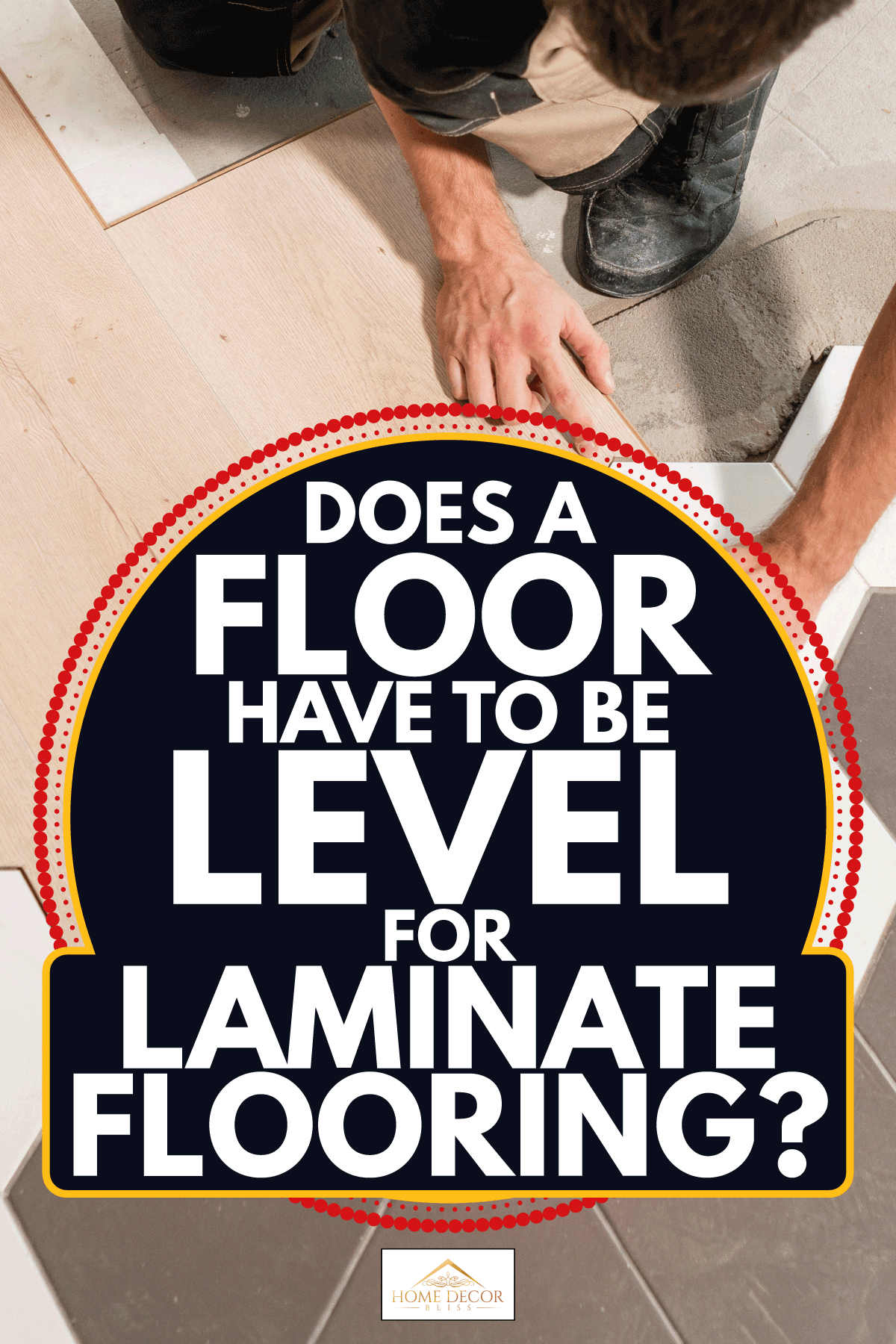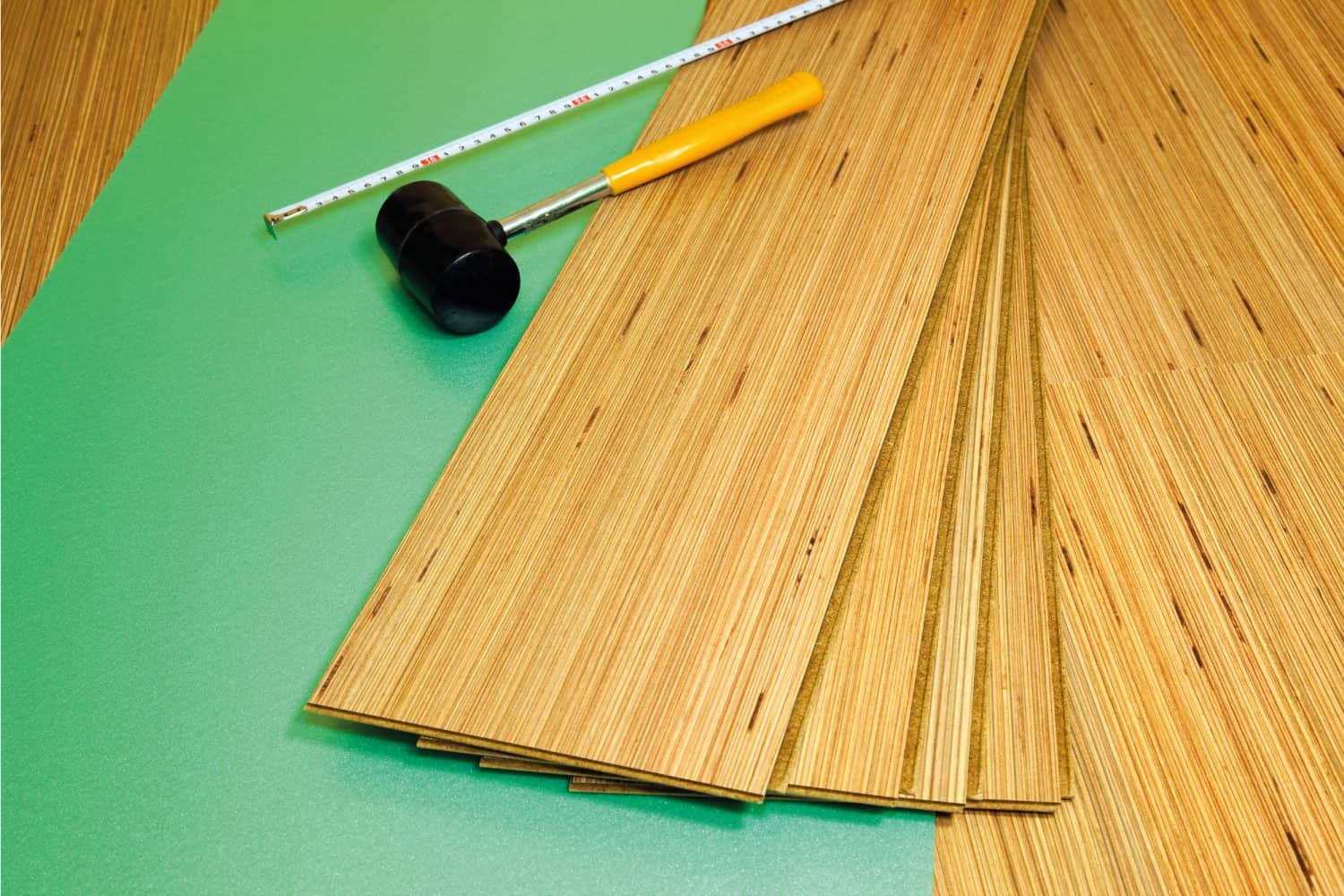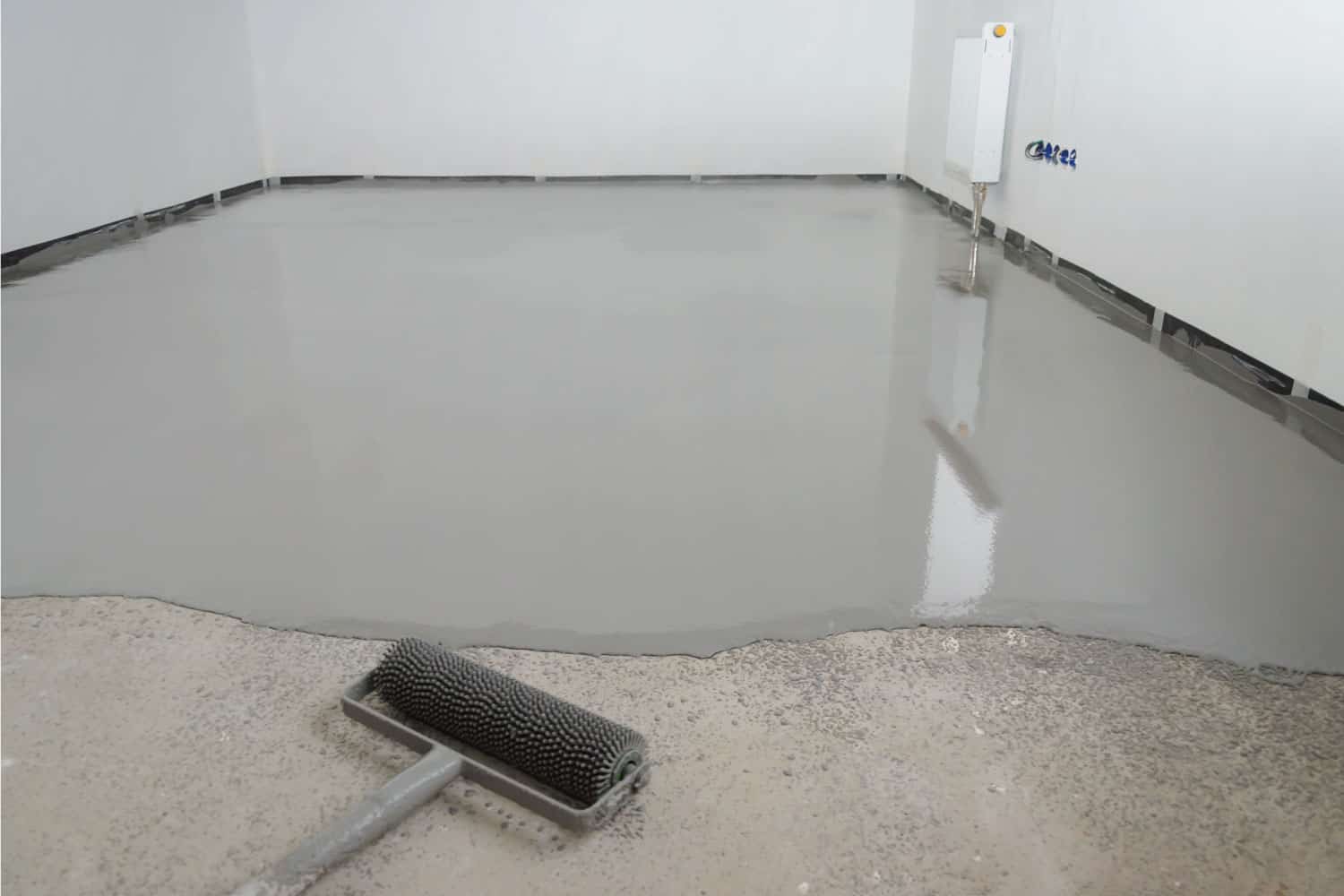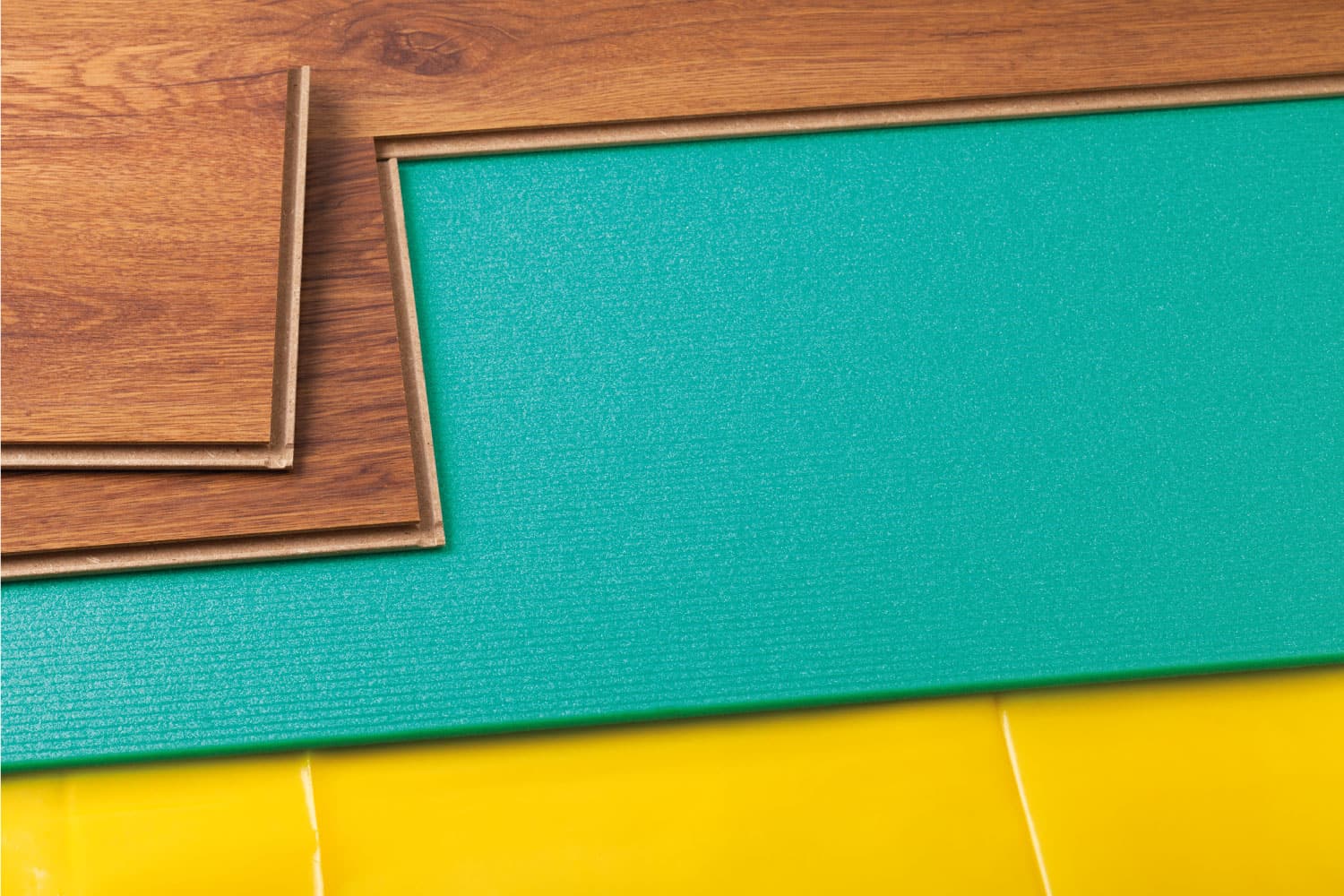If you're handy around the house, you might be considering installing your own laminate flooring. Laminate is a great DIY project. It isn't as complicated as some other flooring options. It also doesn't require a ton of special tools. However, the most challenging part of putting down laminate for many people is actually due to issues with the subfloor. We've checked with flooring experts to figure out what these problems are. For example, does a floor have to be level for laminate flooring?
The subfloor must be level for proper installation of laminate flooring. Other steps to correctly put in laminate floor include:
- Prepare the subfloor and work area.
- Cut the trim around doorways to match the new flooring.
- Measure the room to plan out the rows, including the first and last row.
- Cut the planks as necessary to fit the first and last rows.
- Install the underlayment.
- Install the first row, and then continue with each subsequent row.
Keep reading to learn more about just how to make sure the subfloor is ready before you begin. First, we'll cover why the floor has to be even and what you can do if it's not. We'll also cover the use of underlayment—is it really necessary? And finally, we'll let you know just how much you can expect to shell out if you need to address the problem of an uneven subfloor.

How To Prep The Subfloor
To get the subfloor ready for installation, there are several steps:
- First, remove baseboards and molding; also, remove the existing flooring.
- The subfloor must be solid—use a patching compound to fill in any gouges in concrete floors.
- The subfloor must be clean and solid—for example, remove any nails or other debris. Replace any broken or damaged boards in a wooden subfloor.
- Determine whether you need to level the floor. You can use underlayment to address minor uneven spots. If the floor is too irregular, this needs correcting before you lay the new flooring.

What Happens If You Put Laminate On An Uneven Floor?
Warping and buckling can occur when you lay laminate on an uneven floor. As the boards settle, they might even begin to come loose. In addition, the locking system that holds the laminate boards together can be damaged or break as they flex due to improper installation.
An uneven floor can also be noisy. If you've ever walked across a floor that groans, pops, and knocks when stepped on, it probably had an uneven surface. Air trapped in the pockets left under the flooring cause the noise.
How Do You Level A Wood Subfloor For Laminate Flooring?
First, make sure that any joists that the wood rests on are even. If the joists are installed unevenly, the subfloor will naturally be uneven. This problem needs to be corrected before any further action is taken.
Then, you can install shims to raise the necessary parts of the floor. Add them to the joists in the low spots, measuring until it's relatively consistent. Conversely, you can also sand high spots until the subfloor is even. An alternative method is to use plywood of varying thicknesses. Measure and install the plywood as appropriate so that the overall finished surface is level.
Concrete can be fixed in a similar method, grinding or bead blasting the high spots down. Next, use a patching compound to raise the low spots. If the whole floor is uneven, smooth it out with a self-leveling concrete compound.

Does Underlayment Help With Uneven Floors?
It's important to realize that many subfloors aren't perfectly even but still don't require major intervention. You don't want the subfloor to have significant dips and hills. This isn't the right surface for laying a floor. This wavy, uneven subfloor will cause buckling and damage to the laminate.
But if the floor is only slightly uneven, it can typically be addressed with a thick underlayment. This reduces the movement of the floor, keeping it level and intact.
Do I Need Underlayment For Laminate Flooring?
Underlayment is a necessity for laminate flooring. Laminate flooring locks together, resting on the surface of the floor without being nailed firmly in place. The underlayment helps to create the right surface for it. It helps even out minor imperfections in the floor and also absorbs sound.

But be sure to read the manufacturer's instructions for your flooring first. Most recommend a specific thickness for underlayment. If you select the wrong size, your installation might not go as expected. But, again, this is creating the perfect surface for your flooring, so the underlayment needs to be chosen carefully. Occasionally, the laminate may come with an underlayment pad already attached. In this case, don't add another layer - you'll make the underlayment too thick for the flooring.
And, if you're installing the flooring on a concrete surface, you may need a vapor barrier in addition. This helps protect the floors from trapped moisture and water damage.
How Much Does It Cost To Level A Floor?
The amount that you'll spend to level your floor can vary. HomeAdvisor estimates the cost as being anywhere from $2 to $30 a square foot. First of all, there's a difference between leveling concrete or a wooden subfloor. Secondly, it depends on just how big of an area it is. And third, the method used for leveling the floor.
For example, using a self-leveling compound is fairly reliable and accurate. It is, however, not cheap. On the other hand, shims attached to the joists won't cost very much. But getting them even can be a frustrating and challenging process.
If the surface is concrete, a general estimate of about $700 for every 100 square feet is relatively accurate. Fixing a wooden subfloor will be more expensive if the joists need replacing. In this case, expect to pay $100-$300 per joist. If the joists are intact, just replacing the subfloor can cost about $1000-$1500.
In Closing
Laminate flooring is an excellent choice for slightly uneven floors. However, because it is a floating floor and not firmly attached to the subfloor, it doesn't show the minor imperfections of other floors. If the floor is only mildly unlevel, a thick underlayment will help to counteract this as well.
For more severe cases of uneven flooring, you can try a self-leveling compound. You can also add shims to the joists for a wooden subfloor to raise surfaces as needed. Finally, you can sand or grind the high spots down. But no matter what you do, you should correct the problem. Ignoring an uneven subfloor will cause your new floor to buckle, warp, or even come loose.
If you enjoyed this article, try:
Is Laminate Flooring Durable (How Long Does It Last?)
Is Wood Laminate Flooring Real Wood? Here's what you need to know
